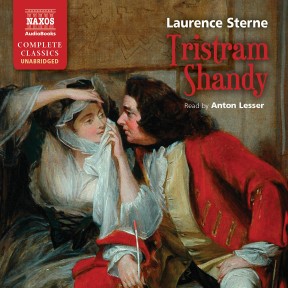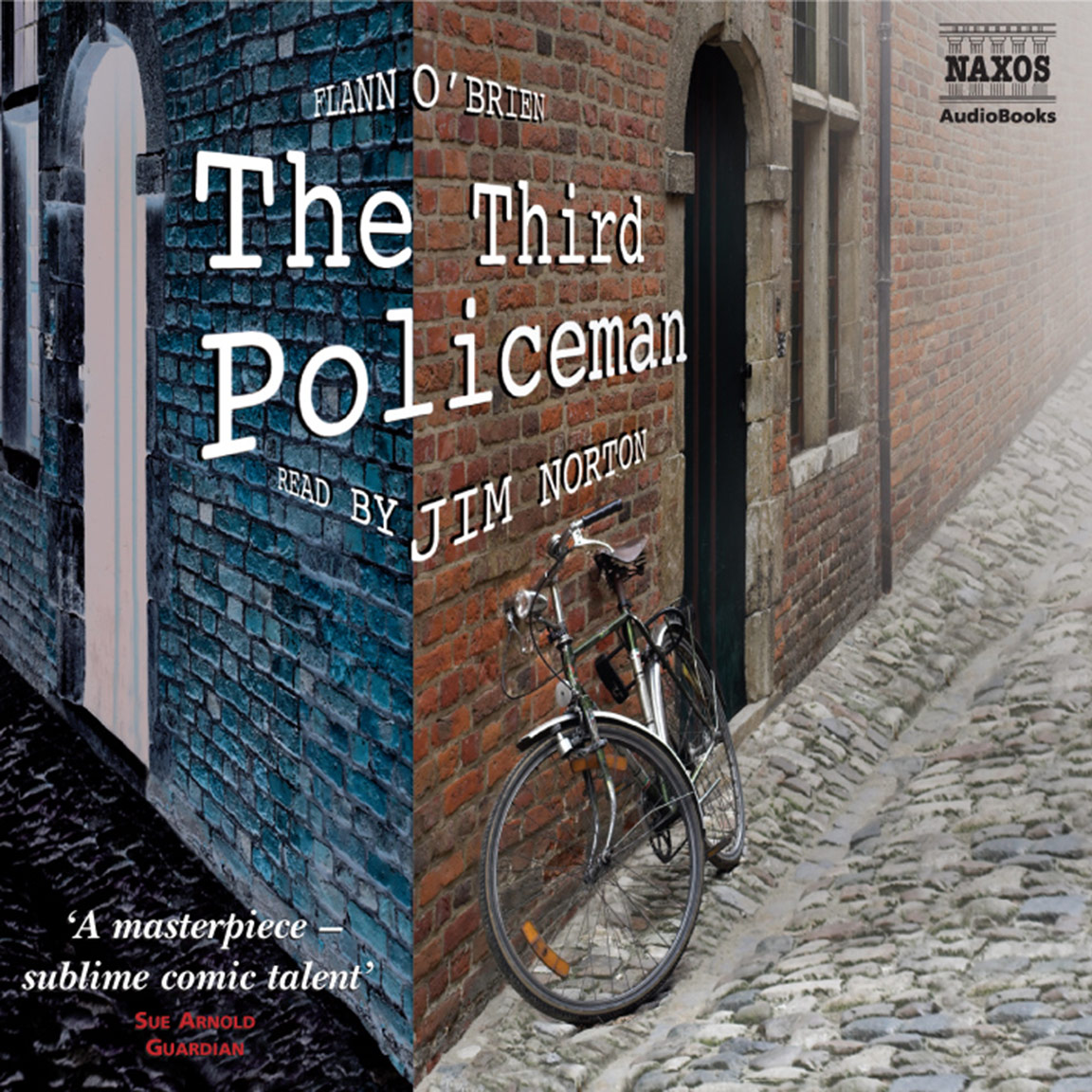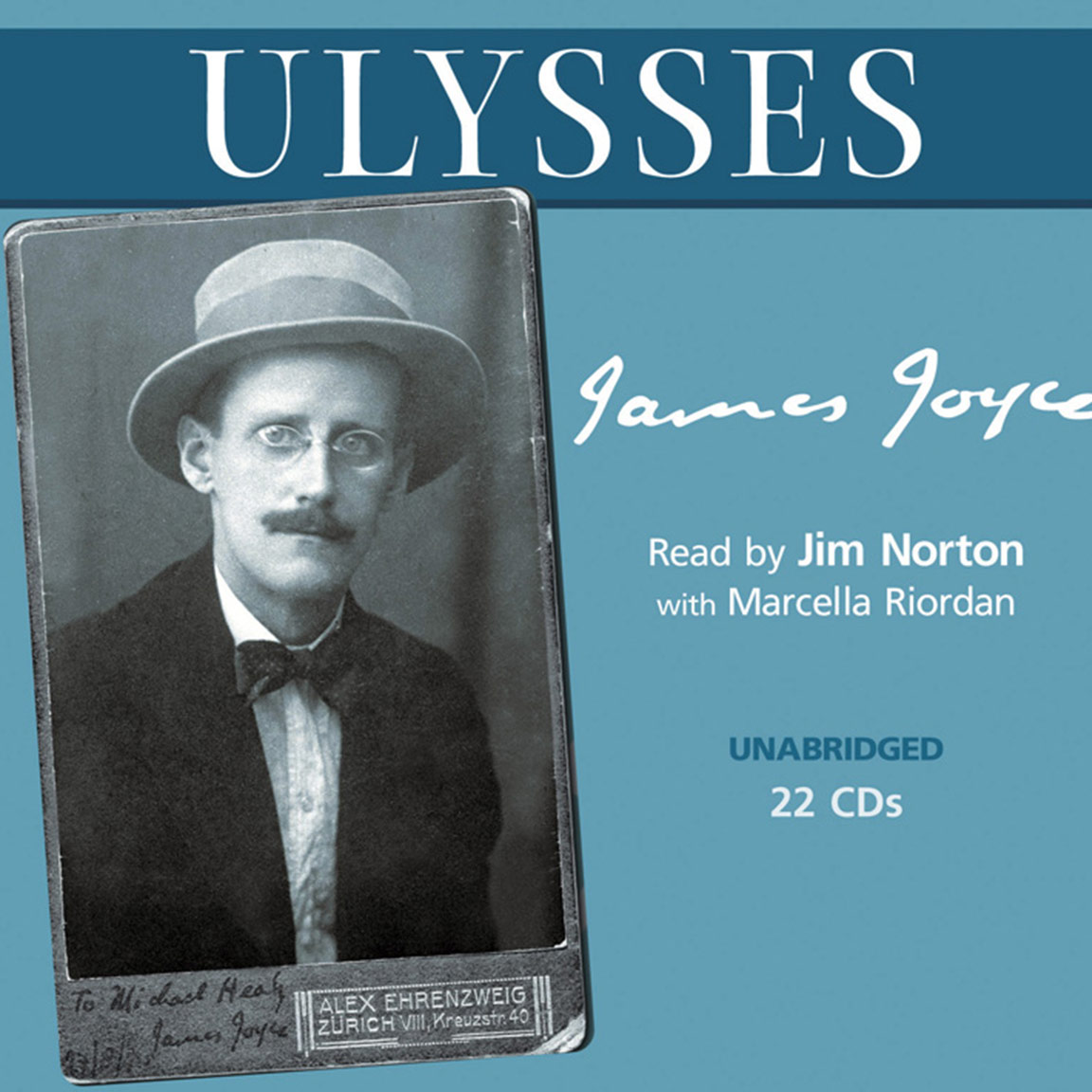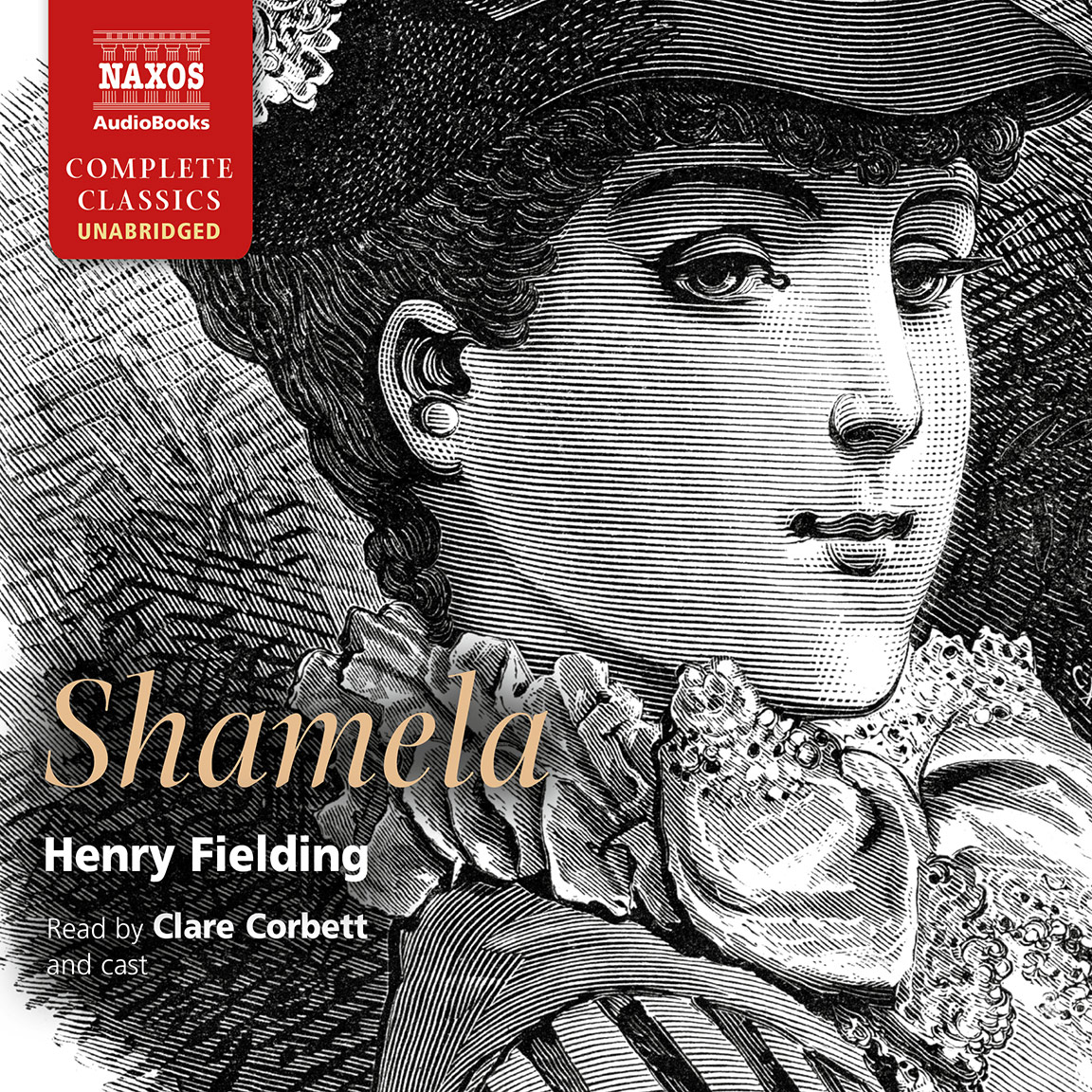
Audio Sample
Laurence Sterne
Tristram Shandy
Read by Anton Lesser
unabridged
Laurence Sterne’s most famous novel is a biting satire of literary conventions and contemporary eighteenth-century values. Renowned for its parody of established narrative techniques, Tristram Shandy is commonly regarded as the forerunner of avant-garde fiction. Tristram’s characteristic digressions on a whole range of unlikely subjects (including battle strategy and noses!) are endlessly surprising and make this one of Britain’s greatest comic achievements. A cast of strange characters populate this strangest of novels: gentle Uncle Toby, sarcastic Walter and of course, the pompous, garrulous Tristram himself. This edition is read by Anton Lesser in a tour de force performance.
-
Running Time: 19 h 02 m
More product details
Digital ISBN: 978-962-954-857-5 Cat. no.: NAX96712 Download size: 278 MB BISAC: FIC004000 Released: July 2009 -
Listen to this title at Audible.com↗Listen to this title at the Naxos Spoken Word Library↗
Due to copyright, this title is not currently available in your region.
You May Also Enjoy
Reviews
“Nothing odd will do long,” declared Dr Johnson in one of his most famous dud verdicts. “Tristram Shandy did not last.” The cock-and-bull story by Laurence Sterne has, in its author’s words, somehow managed “to swim down the gutter of Time” from its first, sensational publication in 1759. The Life and Opinions of Tristram Shandy, Gentleman has inspired and provoked writers as various as Dickens, Joyce and Salman Rushdie. At more than 500 pages, it is the perfect holiday read and Naxos audiobooks has just released an unabridged version, read by Anton Lesser with humour and brio. Lesser’s light tenor is perfectly suited to the many roles (Parson Yorick, Doctor Slop, et al.) who crowd Sterne’s narrative. This translates into 15 CDs and about 19 hours of listening. Perfect for a wet summer.
Robert McCrum, The Observer
‘I have never done anything so hard’ a very pale Anton Lesser is said to have declared on completing his brilliant new recording of ‘Tristram Shandy’. A classic actor who’s voiced everyone from Homer to Hamlet, Lesser seems only to open his mouth for wisdom to come out. But then the problems with performing Laurence Sterne’s eighteenth-century classic of comic metafiction are well rehearsed. As sidetracks sprout from sidetracks, keeping up with the garrulous hero’s chaotic autobiography is one thing. But how the hell are you supposed to read out loud a blank page, or a squiggle? Here sound effects place you firmly at Shandy’s writing desk, while Lesser’s unflaggingly engaged reading insists on the vivid characterisation beneath the stylistic play.
Bella Todd, TimeOut
When I’m in London during the summer, I don’t have the car. This is liberating to an extent, but does mean that I can’t listen to Tristram Shandy. I bought the unabridged 15-CD set at the best possible place – Shandy Hall, Laurence Sterne’s home at Coxwold, in Yorkshire. On visiting, I became uncomfortably aware that I’d never managed to get through any Sterne. Anton Lesser reads Tristram to perfection. By the time I’d driven back to Ramsgate the next day, I had heard 10 CDs, but what about the remainder? My ears are the wrong shape for an iPod; the little earphones fall out. I can’t expect the family to share Sterne in the car. Besides, is he suitable for children? Eventually, they may take to him more quickly than me always going off at a tangent, with no obvious beginning, middle and end, Tristram should appeal to the internet generation. It was a long journey home, because the A1 was jammed. I was amazed to see people turning round and going up a slip road the wrong way in order to escape the hold-up. A lorry driver at the top tried to block them all right, but us cars simply went round onto the verge. How very Italian we’ve become.
Clive Aslet, Town Mouse Country Life
As a general rule I go along with the advice that if a book doesn’t grab you by the end of chapter 4, don’t waste your time, there are plenty more. Yes, but not like Tristram Shandy. Nothing I’ve ever come across is like Sterne’s extraordinary comic tour de force published 250 years ago which, I freely admit, I found pretty hard going a long way past chapter 4. And then, suddenly, I got it. Or at least I realised I was coming at it from the wrong direction. It isn’t a novel. It has no plot. Chapters break off in mid-sentence because, advises the narrator, ‘I would not give a groat for that man’s knowledge in pen-craft who does not understand this: That the best plain narrative in the world, tacked very close to the last spirited apostrophe to my Uncle Toby, would have felt both cold and vapid upon the reader’s palate; therefore I forthwith put an end to the chapter, though I was in the middle of my story.’ And which story might that have been? The one about Uncle Toby’s dalliance with the widow Wadman? Or his manservant Corporal Trim’s tireless reconstructions of Flanders campaigns, complete with battering rams and catapults on the bowling green behind the vegetable garden? Or of Dr Slop, summoned to assist at the narrator’s birth, being thrown from his horse and … Enough. If you’ve ever sat spellbound listening to a witty, satirical, outrageous, digressive raconteur regaling you with endless stories about preposterous characters that lead nowhere but keep you hanging on every word, trust me – they learned their craft from Sterne. So did postmodernists such as James Joyce and Flann O’Brien. It is tailor-made for audio, as is Anton Lesser’s reading – intelligent, humorous, charming. Dr Johnson admired the book enormously, but opined that ‘nothing odd will do long’. For once he was wrong. Tristram Shandy is decidedly odd and extremely long, but it has stayed the course.
Sue Arnold, The Guardian
‘At present, nothing is talked of, nothing admired, except what I cannot help calling a very insipid and tedious performance: a kind of novel, called The Life and Opinions of Tristram Shandy, whose humour consists in the whole narration always going backwards’ – thus Horace Walpole in April 1760, when the first two volumes of Sterne’s masterpiece had become the rage. By 1776 Samuel Johnson was declaring ‘Nothing odd will do long. Tristram Shandy did not last.’
Anton Lesser’s defence is all-out attack, abetted by candour and an ingenuous eagerness
They were right about the oddity, and the going backwards. The novel mostly unfolds before its hero has any Opinions, and a third of it before he has a Life – he isn’t born until volume four, and the action ends in a cul-de-sac several years before his birth. There is scarcely room for him amid the anecdotal clutter and human relics lying around from a previous age. Anton Lesser’s unabridged recording of the novel for Naxos is wonderful, because with Sterne we need the whole package – the way the thin air of experiment thickens unexpectedly into the novelistic domesticities of Walter and Mrs Shandy, and Uncle Toby and his loyal corporal Trim; and Parson Yorick in the parlour, who cannot abide gravity; and the mid-wife and Dr Slop who jointly attend on the eventful birth of the hero; and their servants and animals. (Sterne makes us feel the texture of an age in which England had more sheep than people and a parson could love his horse.)
Anton Lesser’s defence is all-out attack, abetted by candour and an ingenuous eagerness – like an 18th-century hero, in fact. He rightly avoids irony (the novel’s ironies being situational rather than verbal). It is a hobby-horsing voice with an elocutionary flourish, and his energetic delivery drives Sterne’s mazy sentences, which might otherwise run out of steam. At the same time Lesser lets Sterne’s ‘periods’ have free rein; he parses them so confidently that he does not mind where they go, for they have an Augustan lucidity even at their most wayward (they merely wear their syntax on the outside, as the Pompidou Centre wears its pipes). This is a feat of intelligent listening, first and foremost, and it makes hearing the novel more involving for long stretches than reading it for ourselves, which can be a fearful and blindfold business.
The declamatory aspect is key because Tristram’s version of events is all performance (as Walpole perceived), his characters reading aloud or speechifying or quoting or sermonising. But this recording also pays attention to the unsaid and unsayable. Sterne’s digressive principle is based on Locke’s theories of the association of ideas, which seemed to explain the comically ungovernable workings of the head and heart. We muddle our stories, like Uncle Toby. We cannot know our own minds because they are confounded by the vagaries of language – and are attached to bodies, which have minds of their own. Which is why gesture is so important, and is of a piece with other unbearable things in the novel, its blank pages and asterisks and dashes and so forth. At this point an audio reading becomes an intriguing commentary on what Sterne is up to.
By the same token, we cannot know each other. The final chapters, when the comedy of the sexes comes to a head with Uncle Toby’s thwarted wooing of and by Widow Wadman, are incomparable. Lesser does justice to Wadman’s genteel but incorrigible solicitude concerning Toby’s wounded groin, and to the uxorious parrying between Walter and Mrs Shandy, the blandest exchanges in the history of the novel, in which nothing is said yet something (but what?) is intimated. Anton Lesser reads these passages with just enough sidewind of hesitancy or reserve, as of something blowing the reading slightly off-course, to allow their silences to sound in our ears. In an age which felt suddenly confident that the novel could know everything, Sterne extended this to include the knowledge that other people are a mystery story.
Paul Keegan, The Oldie
I never got very far with reading that most confusing, weird novel Tristram Shandy, so I’m listening to it. It was after all published between 1759 and 1767, a time when novels were often read aloud to an audience eager for any kind of entertainment while they tatted lace or fiddled with fishing flies. Apparently they didn’t mind the fact that, thanks to the discursive style, Tristram isn’t born until the third volume. By then the bemused, possibly snoring, listener has met Uncle Toby and Parson Yorick, and been led up innumerable garden paths and gathered many more or less bawdy red herrings. Anton Lesser is magnificent; his sparky, slightly manic narration is ideally suited to Laurence Sterne’s exclamations and digressions. A little goes a long way, though. It is some comfort to learn that Sterne published it in parts over eight years. I’ve decided to look on it as a radio soap and take it in daily doses. Will it work? Time will tell.
Christina Hardyment, The Times
Booklet Notes
‘…I live in a constant endeavour to fence against the infirmities of ill health,
and other evils of life, by mirth; being firmly persuaded that every time a man smiles,
but much more so, when he laughs, that it adds something to this Fragment of Life.’
– from Sterne’s dedication to William Pitt in the second edition of Tristram Shandy.
There is a case to be made that Laurence Stern’s The Life and Opinions of Tristram Shandy is one of the most extraordinary novels ever written. It could also be argued that it is not a novel at all, as almost none of the stories it tells are ever completed, their resolutions being forever deferred, as some new thought strikes the author and he heads off on a digression that can last from a few lines to whole chapters. On this basis, Dr Johnson decided that, despite its popularity, it would have no future, as ‘nothing odd will do long’. He was right that it was odd; he was wrong about its durability.
Since the first volumes of the book were published in 1759, it has influenced writers whose work is considered post-modern because of the way in which it subverts the accepted conventions of ‘the novel’. The author talks directly to his audience; the audience occasionally responds or interrupts; there are discussions about how the book is progressing; paragraphs are replaced by asterisks; chapters are deliberately missed out; some are inserted at a later point; and there are visual and compositing jokes that surprise the reader’s expectations – diagrams, pointing fingers, a swirling line on the page to indicate a swishing cane.
Sterne also plays with the fact that, despite the book being written in the first person, the ‘I’ of the narrative (Tristram Shandy) is not actually the author. The book shares with the reader a knowingness about what is being written and read, but this is complicated by the fact that the story he is ostensibly writing never really gets told. To tell the tale, the writer has to explain who all the characters are, how they relate to one another and what they are thinking, and these extensive offshoots are complemented by the author’s own digressions and considerations, with the result that the plot can’t progress because each new idea generates others of its own, as a kind of literary Hydra.
This inventive subversion of conventions and self-awareness was to be a mark of writers in the 20th century – such as Joyce, Flann O’Brien, B.S. Johnson – and the French nouveau roman movement. But all these avowed literary iconoclasts wrote almost 200 years later, in an attempt to reinvent the novel, whereas Laurence Sterne was a provincial priest, writing not long after the birth of the novel itself.
There had been little to suggest that he was a genius in waiting in the 45 years of his life prior to the publication of the first volumes. The son of an ensign in the British army, Sterne was born in 1713 in Clonmel, in what is now the Republic of Ireland. For the first 10 years of his life he lived the customary existence of military personnel, moving frequently between barracks, and between England and Ireland. But by the age of 10 he was at school in Halifax, never to see Ireland or his family again. His father died eight years later as a result of a wound inflicted in a duel, apparently provoked by an argument about a goose. Sterne’s cheerful fatalism about death seems to mirror this combination of the tragic and the farcical. Indeed, after his own death his body was secretly disinterred and used at a demonstration by an anatomy professor, much to the surprise of one of Sterne’s friends, who recognised his face.
In 1733 Sterne was granted the status of an exhibitioner at Jesus College, Cambridge, where a relative had been Master, and while there he ran up substantial debts and displayed the first signs of the consumption that would eventually lead to his death. He was not much taken with the curriculum at Jesus, but he was an enthusiastic reader of the classics and was attracted by the ideas of the tradition of the ‘learned wit’. In this, his writing was to be a supreme example – his career was not.
Later, he was ordained and entered the Church of England in Yorkshire, serving in various rural parishes for 20 years; but he was never really suited to the task, any more than he was to his marriage to Elizabeth Lumley. They had two children, though only one – Lydia – survived. Sterne’s affections wandered, however, and after learning of an affair he had had with a maid, his wife fell into a state of temporary insanity. Both he and Lydia also suffered illnesses, but in 1759, despite this melancholic situation, he started to write Tristram Shandy.
A major educational influence on his life as a writer and social being, more so than the conventional schooling he had received, was his friendship with the witty and convivial minor poet and satirist John Hall-Stevenson. They met at University and their friendship encouraged the development of those elements of Sterne’s character that were not fed by his life as a parson. Sterne also found his intellectual and personal appetites awakened by authors with a wilder and parodic bent, such as Rabelais, Swift and Cervantes. Apart from his sermons, Sterne also wrote political pamphlets, and his only major work before Tristram Shandy – A Political Romance, which mocked the spiritual courts – was banned by his own Church. It must have been a significant initiation to discover that he could create such an effect through writing, even at the expense of his career.
But the Church would never meet Sterne’s ambitions. He wanted to be famous, an aspiration that was to be fulfilled almost immediately when Tristram Shandy was published, and not just in Britain. Sterne became a major literary figure, fêted at home and abroad, enjoying the celebrity. The European critics, however, were generally more enthusiastic and more profoundly touched by the moral nature of the story than their British counterparts, who were either hugely amused by the novelty or deeply offended by the jokes.
They had a point. The whole book (its various volumes were published between 1759 and 1767) is ripe with bawdy passages, double entendre, coarse slang and innuendo, sly suggestiveness and mock innocence. At the same time, though, it is full of intellectual mockery and parody, political satire, sideswipes at critics, genuine learning, faux erudition, burlesque and warm comedy – an endless pool of ideas being stirred and tasted. There is also a profoundly moral and touching humanity running through all this swirling invention. For such a stylised novel, it is still illuminated by the characters: Tristram’s endlessly opinionated father, Walter; the gentle warrior, Uncle Toby and loyal Corporal Trim with their extraordinary determination to act out every siege in Europe on a bowling green; and Parson Yorick, a character who bears a close resemblance to Sterne himself. So close in fact that Sterne published his own sermons and his other major work, A Sentimental Journey Through France and Italy, under the name of Yorick.
This journey was largely an attempt to bolster his failing health, which was in as parlous a state as his marriage. His wife’s mental health had improved, but she too was affected by consumption. Meanwhile, he had fallen in love with several other women, and after the trip she opted to stay in France. Eventually, in August 1767, they decided on a permanent separation. It proved even more permanent than they had planned – Sterne caught influenza and died on 18 March 1768. He had laughed away the inevitability of death in Tristram Shandy; but he had been physically aware of it all his adult life.
As a writer, he was not the first to try to do something original with the novel, and he will continue to be succeeded by writers addressing the complex relationship between a work of art, its creator and the audience. Some of the satire in Tristram Shandy is occasionally too specific to its time to be easily accessible to modern readers; its language can be opaque and dense; and Sterne can be maddeningly over-allusive to forgotten authors and their works, for immediate understanding. But these reservations fade beside the sheer delight, humour, wit, characterisations, brilliance of invention and astounding narrative voice that continue to make Tristram Shandy one of the most extraordinary novels ever written. If it is a novel…
Notes by Roy McMillan
SHANDY HALL
‘I am as happy as a prince, at Coxwould – and I wish you could see in how princely a manner I live – ’tis a land of plenty. I sit down alone to venison, fish and wild fowl, or a couple of fowls or ducks, with curds, and strawberries, and cream, and all the simple plenty which a rich valley under Hambleton Hills can produce – with a clean cloth on my table – and a bottle of wine on my right hand to drink your health. I have a hundred hens and chickens about my yard–and not a parishioner catches a hare, or a rabbet, or a trout, but he brings it as an offering to me… – I am in high spirits – care never enters this cottage’
– Letter by Laurence Sterne, June 1767
It was Laurence Sterne’s imagination that created Shandy Hall to house his collection of characters in The Life and Opinions of Tristram Shandy. Inside the house the characters rub along together, climb on and off their hobby-horses, argue, apologise, misunderstand each other and live the celebrations and disappointments of the day-to-day activities that govern all our lives.
The name Shandy was taken (perhaps – many things connected with Sterne are not completely certain) from a Yorkshire dialect word meaning ‘odd’ or ‘crack-brained’ so the name is appropriate when things don’t necessarily work out as planned – and life is sometimes reduced to a series of unfortunate events. But like the inhabitants of Shandy Hall, we have to bear up and get on with it.
It was December 1759 when the first two volumes of Tristram Shandy were printed and put on sale in York. The author’s name is conspicuous by its absence. By the following year, Sterne and his hero Tristram were both equally famous. Sterne’s portrait had been painted by Joshua Reynolds (see page 24) and the Sermons he had given in his earlier life were now also in print but under the name of Yorick – the fictional Parson Yorick of the novel. Sterne was known as both Tristram and Yorick and the difference between reality and fiction were becoming blurred.
And then Shandy Hall itself became a reality as Sterne moved from nearby Stillington to the mediaeval hall in Coxwold and he took on the duties of Vicar of this delightful village. He preached in the pulpit which can still be seen in the church and his bones (or rather some of his bones) are buried in the churchyard alongside generations of local North Yorkshire families. But that’s another story.
His new home was christened by his friends as Shandy Hall and it has remained so to this day.
Sterne’s house is now a lived-in museum containing the finest collection of editions of his works and related prints and paintings. It is open to the public on Wednesdays and Sunday afternoons from May to September, but group visits can be arranged at any time. Exhibitions and events take place regularly and details can be found at www.shandean.org.
Written by Patrick Wildgust (Curator – Shandy Hall)
Shandy Hall, Coxwold, York, North Yorkshire, YO61 4AD




